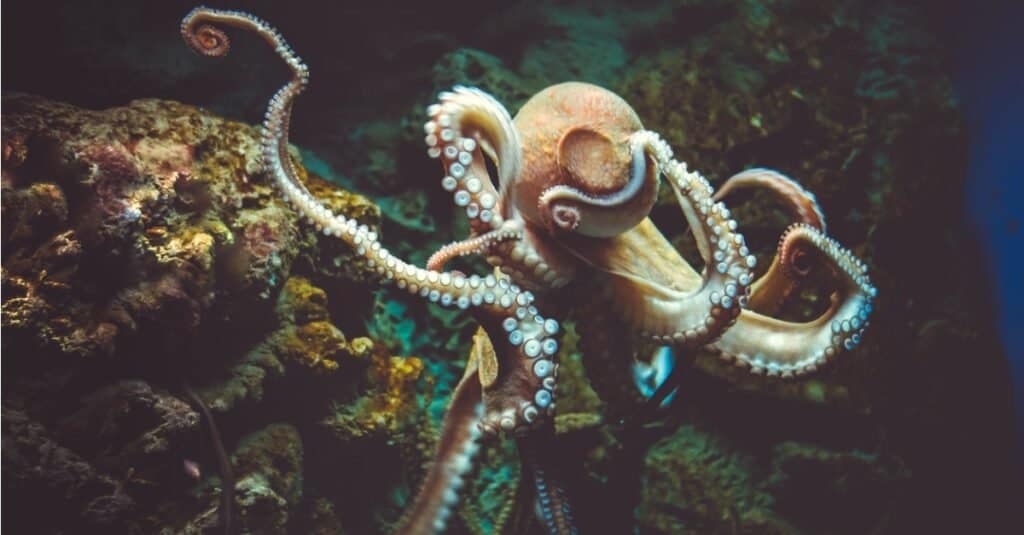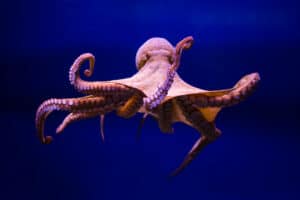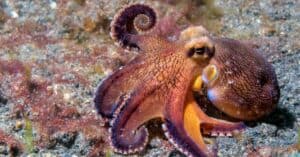If you don’t catch what is happening in this video straight away, don’t worry – the fish had no idea what was going on either. Until it was too late! Watch the whole video again!
Watch This Fascinating Video Below!
See how a very well-camouflaged octopus detects the approach of an unsuspecting fish? It reaches up with one of its tentacles (which are actually called arms) and drags it into its mouth. The octopus then retreats back under a rock and disappears from view.
All About The Amazing Octopus

©iStock.com/daboost
The octopus is an extraordinary animal. There are around 300 different species and they are found in oceans all over the world. They are the most intelligent of all invertebrate animals and have amazing problem-solving capabilities.
This octopus has blended in perfectly with their environment by adopting a mottled red-brown coloration. This is because their skin contains highly developed pigment-bearing cells called chromatophores. They change color according to the environment. As a result, the octopus can ambush prey, as we see in this clip, and evade predators. In terms of prey, they like to hunt smaller fish, clams, crabs and snails. In turn, they are preyed on by larger fish, seabirds, other cephalopods, and sea otters.
Arms Vs Tentacles

©Olga Visavi/Shutterstock.com
In scientific terms, the octopus can be described as an eight-armed cephalopod mollusk of the Octopoda order. Arms have lines of suckers going down them but tentacles don’t – so octopuses have arms!
They use their arms to find out about their environment, and move and grab prey – as we see here. The suckers are the shapes of a frisbee and are both powerful and sensitive. When they come into contact with something (such as this fish or a rock surface) they flatten against the surface creating a seal. The muscles in the sucker contract reducing the water pressure in the sucker and so it holds fast. Suckers are made up of two parts. The outer, visible part is called the infundibulum with grooves and ridges that help it make a watertight seal. The chamber inside the sucker is called the acetabulum. This has brush-like hairs inside which are thought to help with suction.
The outlook for this fish is not great! Octopuses typically take their prey back to their dens where they scrape off flesh using their radula (a structure with tiny teeth).
The photo featured at the top of this post is © Daniel Eskridge/Shutterstock.com
Thank you for reading! Have some feedback for us? Contact the AZ Animals editorial team.






